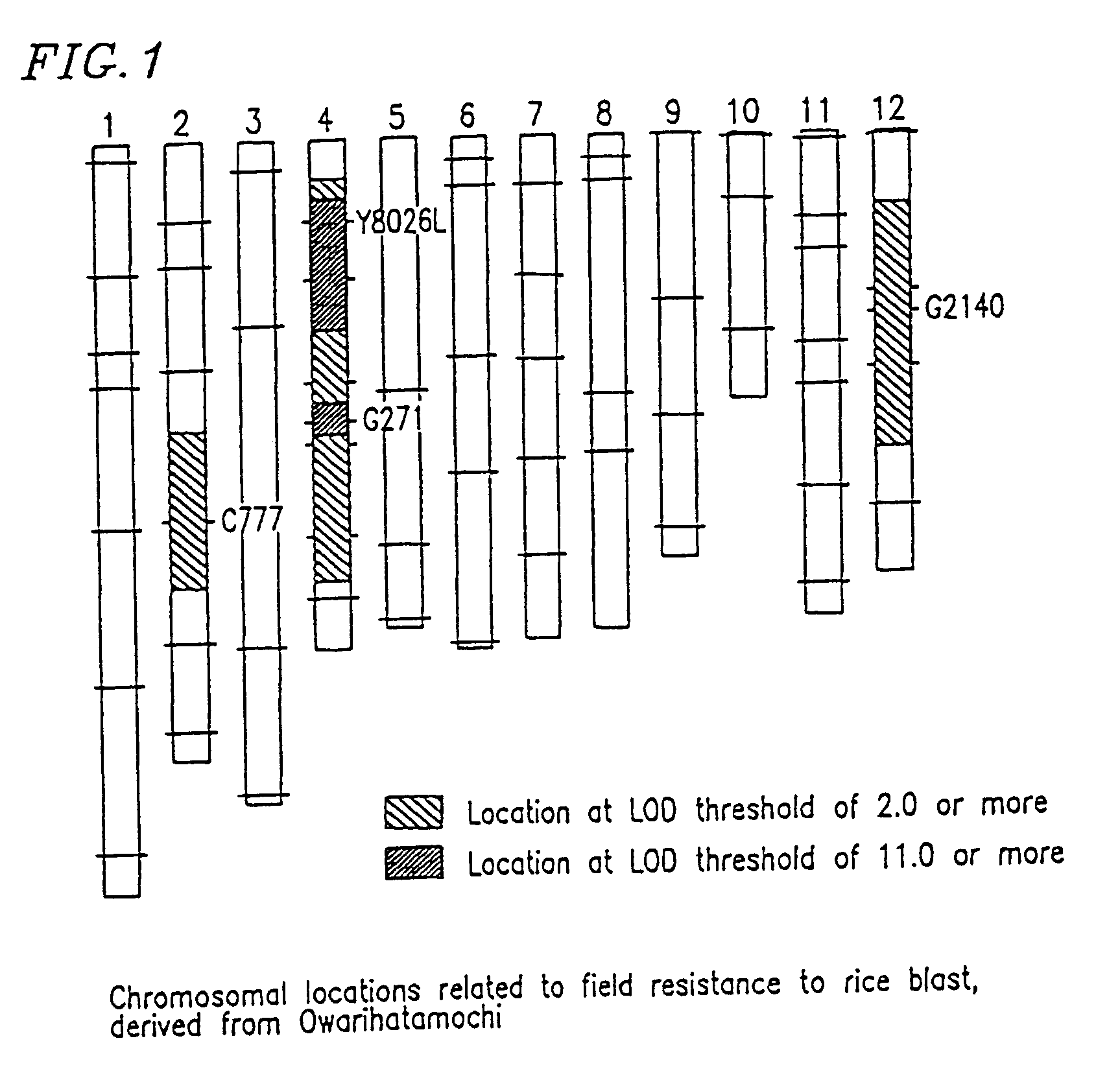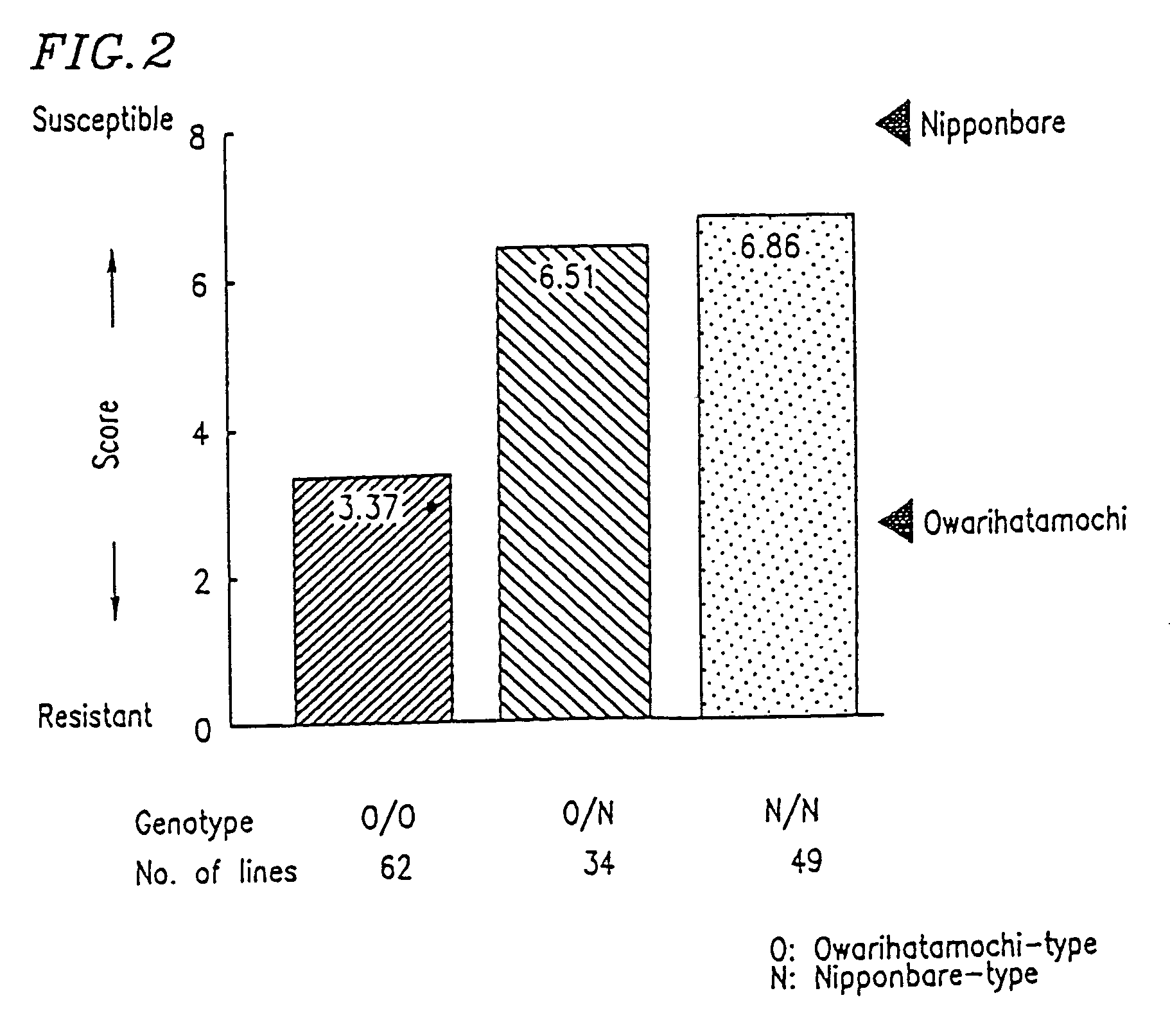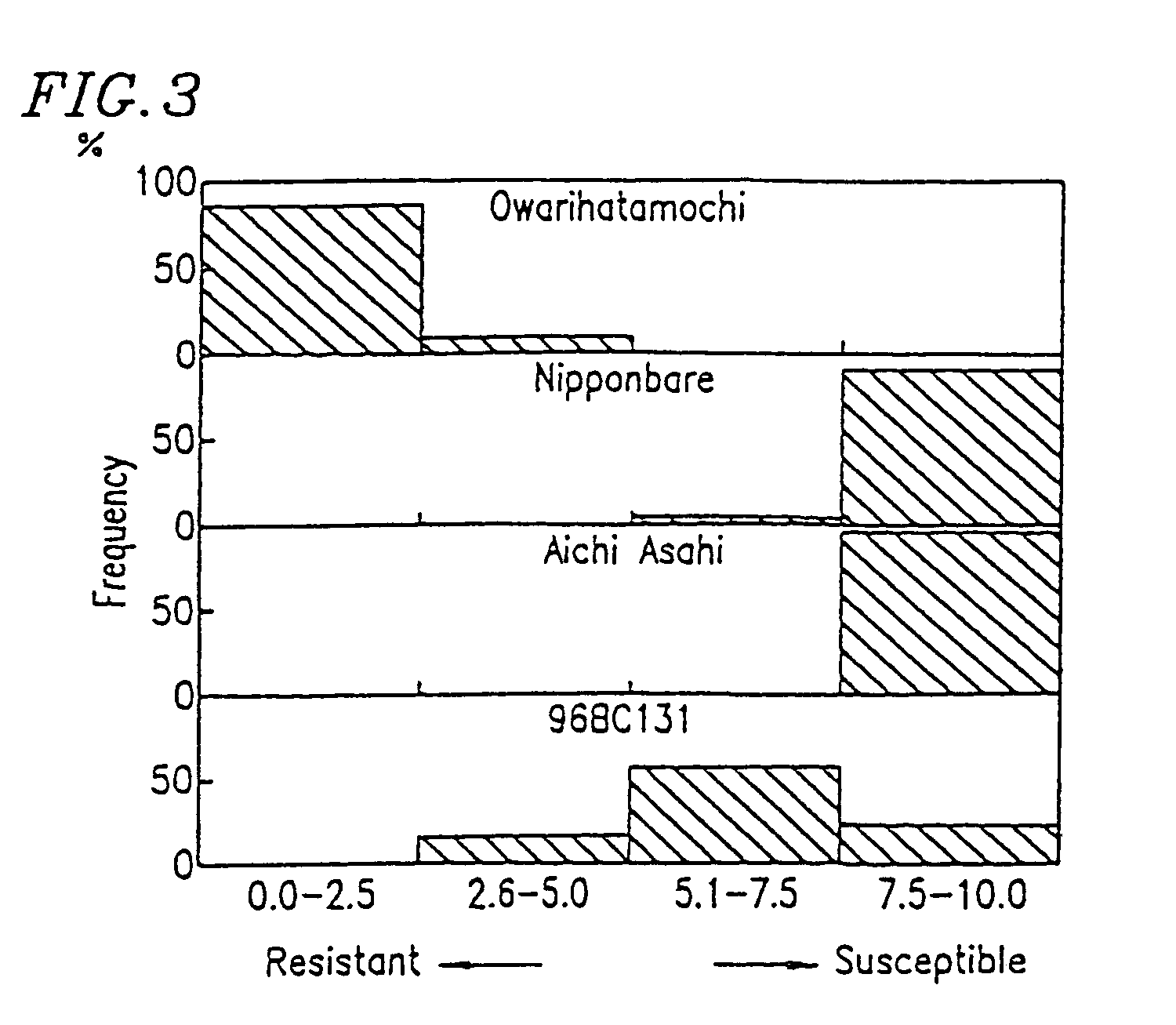DNA polymorphism-based methods for identifying field resistance of rice to rice blast
a field resistance and rice technology, applied in the field of plant genetics, can solve the problems of destroying all rice plants in the farm, affecting the field resistance of rice blast, so as to reduce labor and growth period, improve field resistance to rice blast, and convenient indoor selection. the effect of accuracy
- Summary
- Abstract
- Description
- Claims
- Application Information
AI Technical Summary
Benefits of technology
Problems solved by technology
Method used
Image
Examples
example 1
Specifying Chromosomal Location Related to Rice Blast Field Resistance Derived from Owarihatamochi
[0054]More than 40% of the DNA markers in the rice linkage map exhibit polymorphism between a lowland rice variety and a upland rice variety. Based on this, the present inventors studied the chromosomal locations related to the trait of the field resistance to rice blast in a Japanese upland rice variety.
[0055]A QTL analysis was conducted for the F4 generation of a line which was obtained by crossing Owarihatamochi, a Japanese upland rice variety having a high degree of field resistance, with Nipponbare, a Japanese lowland rice variety having a low degree of field resistance. The two varieties were crossed according to a hot water emasculation method (“Rice Breeding Manual”, Agricultural Research Center Research Report No. 30, pp. 176–180 (1995)).
[0056]Seed for rice variety Owarihatamochi were deposited on Jan. 29, 2004 with accession designation FERM BP-08604 under the Budapest Treaty ...
example 2
Specifying DNA Marker which is closely linked to Gene Controlling Rice Blast Field Resistance
[0071]The following experiment was conducted to confirm that the QTL which exhibited about 47.8% of phenotypic variation as specified in Example 1 is actually related to the trait of the field resistance to rice blast. A back-crossed plant (96BC131) having only one of the QTLs was generated by crossing Owarihatamochi with Aichi Asahi', a variety which has a low degree of resistance to rice blast, and selecting by an ordinary method with the DNA marker G271. Then, 96BC 131 was used to examine the genotypes of the DNA markers (C777, Y8026L, G271 and G2140) which are linked to the QTLs related to the rice blast field resistance derived from Owarihatamochi, as confirmed in Example 1. As a result, it was found that only the QTL which exhibited about 47.8% of phenotypic variation was included in 968C131 (see Table 6). That is, only the DNA marker (G271) which was linked to this QTL exhibited the g...
PUM
 Login to View More
Login to View More Abstract
Description
Claims
Application Information
 Login to View More
Login to View More - R&D
- Intellectual Property
- Life Sciences
- Materials
- Tech Scout
- Unparalleled Data Quality
- Higher Quality Content
- 60% Fewer Hallucinations
Browse by: Latest US Patents, China's latest patents, Technical Efficacy Thesaurus, Application Domain, Technology Topic, Popular Technical Reports.
© 2025 PatSnap. All rights reserved.Legal|Privacy policy|Modern Slavery Act Transparency Statement|Sitemap|About US| Contact US: help@patsnap.com



